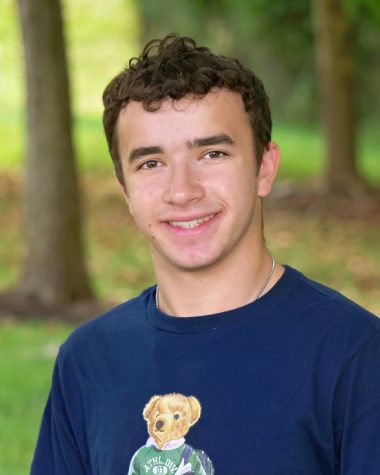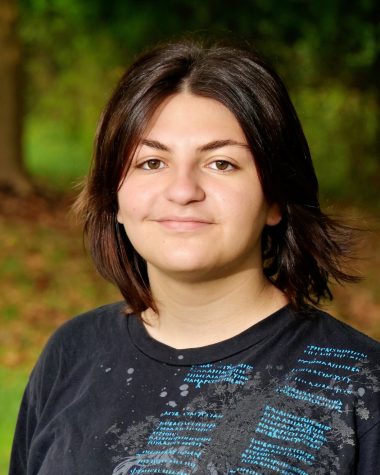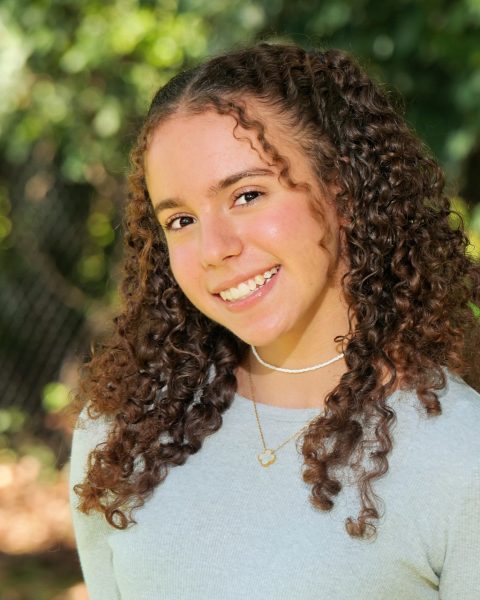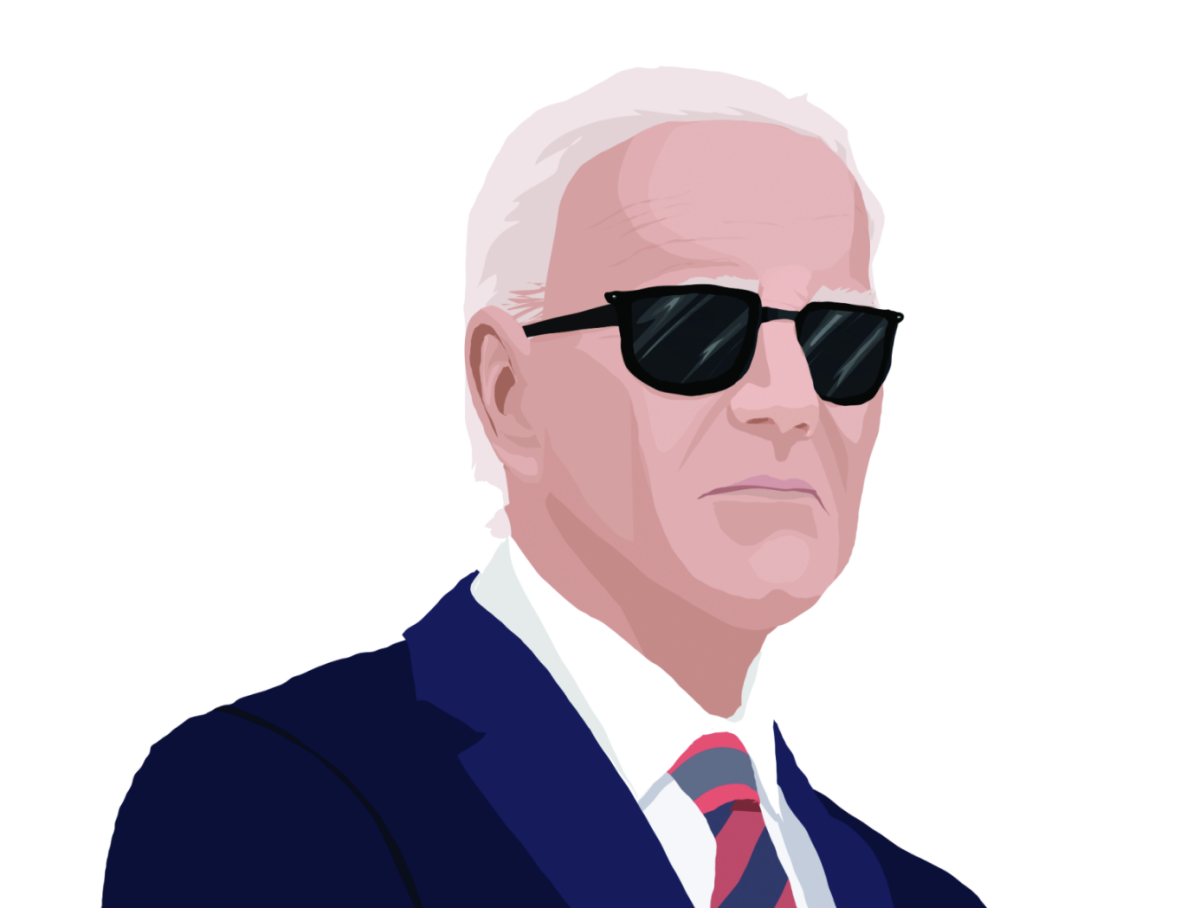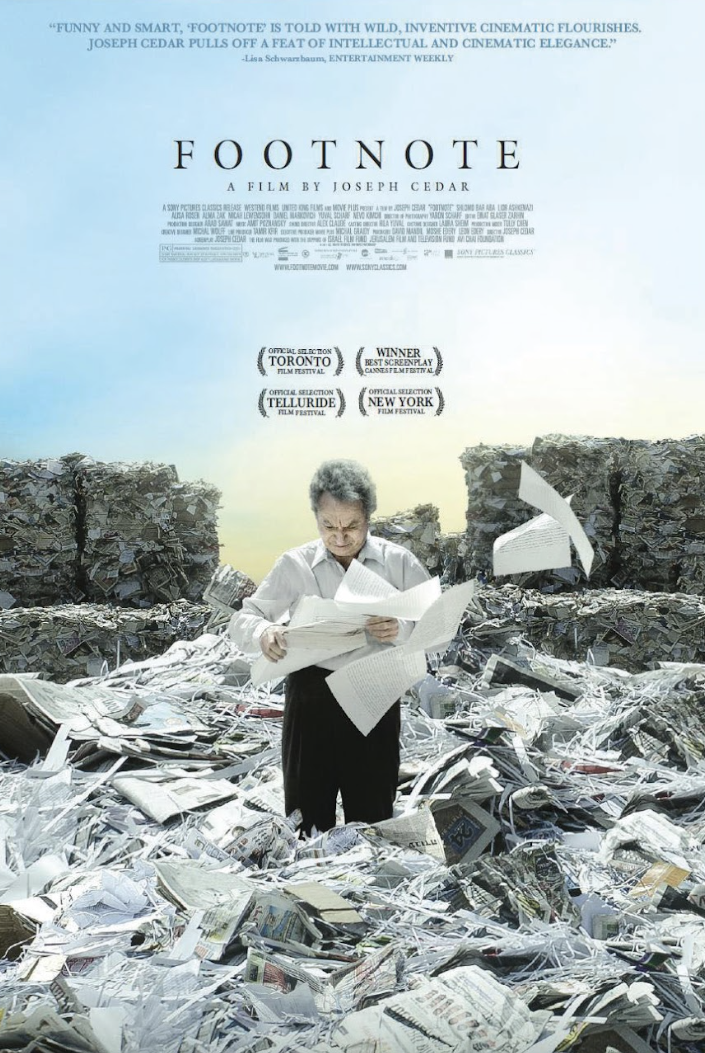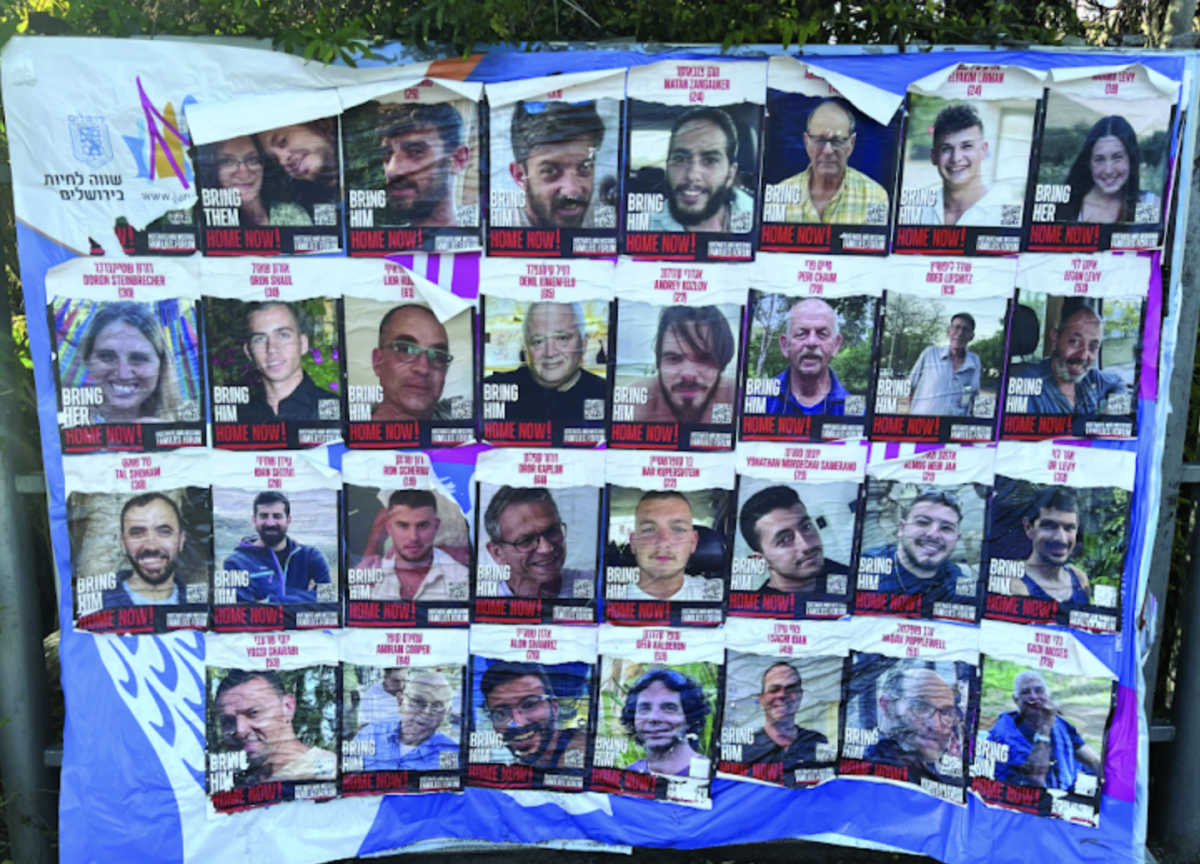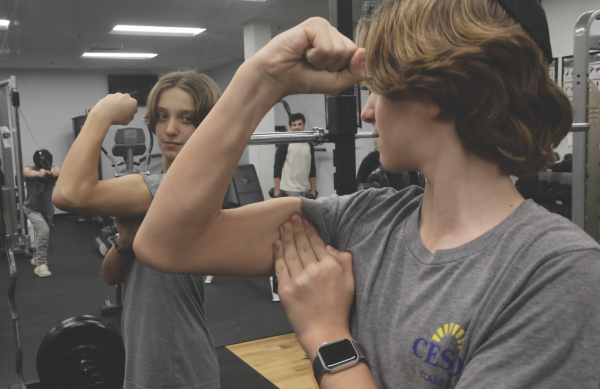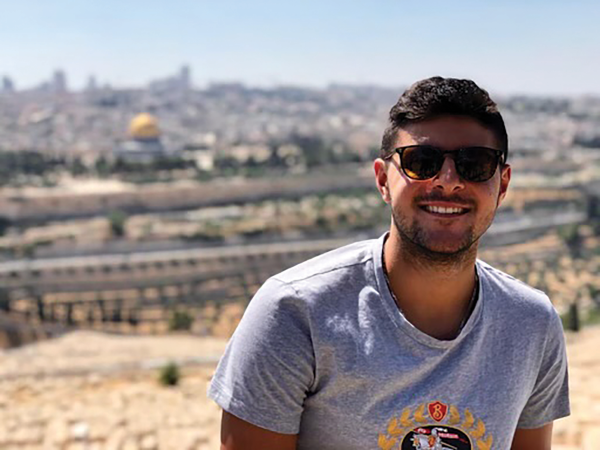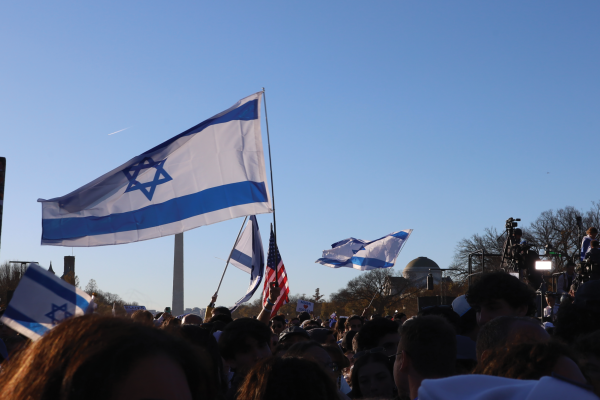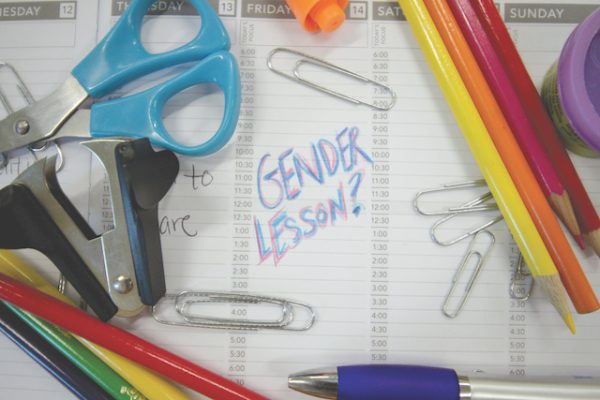Zman Kodesh or Zman Chofesh
September 9, 2022
Ever since CESJDS was founded in 1965, a specific time for prayer has always been set aside as part of each student’s day. Over the course of many years, this time in the morning has evolved into what is now known as Zman Kodesh, or ZK. Zman Kodesh allows students to have a part of their day where they can experience a spiritual Jewish connection and have time to relax, pray and reflect.
“Traditionally, Jews have started their day with tefilah in the morning, and so as an educational matter we wanted our students, even if they themselves don’t daven every morning on their own … to gain skills and understanding of how traditionally Jews started the day with Shacharit,” Head of School Rabbi Mitchel Malkus said.
Before Zman Kodesh existed, students participated in what was previously called Minyan. Minyan was very similar to Zman Kodesh in practice; however, it offered fewer options and was more strictly meant for prayer.
In 2002, the Minyan format was changed into the now-familiar Zman Kodesh, according to Dean of Students Roslyn Landy. This change was made in order to recognize that Minyan did not have to only be a time for traditional prayer, but rather a time for all students to connect to Judaism in a way that works.
Over the years, the program has continued to evolve. New Zmanei Kodesh have been added almost yearly to the program in order to give students a variety of options when picking their Zman Kodesh. Newly appointed high school Jewish Life Chair, high school math teacher and middle school softball coach Robbie Shorr is now in charge of managing the different Zman Kodeshes, and making sure the Zman Kodesh program runs smoothly.
How does Zman Kodesh work? What are the options?
From Shacharit services to yoga, there is a Zman Kodesh option for each student’s personal needs.
Students who enjoy traditional services can participate in Mehitzah Ashkenazi, Partnership Minyan and Mehitzah Sephardi and Masorti, an egalitarian style service.
Partnership Minyan, which is a traditional service that separates males from females but still allows females to participate in reading Torah. Along with the traditional praying options, JDS offers Art and Wellness, Art and Exploration, Journaling, Book Club, and Yoga.
Since 2019, former high school learning specialist Brett Kugler coordinated the Zman Kodesh program in the absence of a Director of Jewish Life. In addition to running the program, Kugler also ran the middle school Mechitzah Ashkenazi minyan for the last 12 years. Kugler’s goal was to ensure that every student has a place in a ZK, so they could connect to Judaisim in a way they enjoy.
“So Zman Kodesh literally means holy time, and that looks different for all different types of people,” Kugler said. “We want to make sure that we are able to provide different avenues to connect and to feel spiritually charged.”
In order to ensure that every student feels accepted, Kugler tried to listen to what students wanted when evaluating which ZKs should be added or dropped. However, the most important aspect of the process to Kugler was ensuring that there was spiritual value in each program.
“There are so many features and facets that go into having success,” Kugler said. “One of the things that’s so beautiful about the school is that we have dynamic educators who can look at the pulse of a Zman Kodesh space, and who can then adjust accordingly to make sure that it really is successful.”
Kugler thinks the staff members that continue to lead their Zmanei Kodesh each year allow for new opportunities because the program is so stable.
“So this year, we really built out and we did the Partnership Minyan, which is brand new this year; that has seen a lot of success,” Kugler said. “We did the Book Club, which is new. We’ve been revamping the Art and Explorations Zman Kodesh to include a lot more Jewish content. It’s been nice to have both a combination of consistency and growth at the same time.”
Partnership Minyan has quickly become popular, led by Shorr. As Shorr takes on his new role, he hopes that the attitude as a whole towards Zman Kodesh changes and becomes more positive.
“I don’t want us to be saying ‘make sure you’re on time to class and ZK,” Shorr said. “ZK is a class. If you say make sure you are on time to class, that should include ZK.”
While Shorr headed his own Derekh Tefillah for about four years, he only started the Partnership Minyan this past year. Shorr describes it as the middle point between Mechitzah and Egalitarian minyan, where there is davening every day and women can participate in almost everything except for leading Shacharit.
Shorr said one of his biggest challenges as a Zman Kodesh leader is recruiting, especially since Partnership is the newest ZK to the long list of options. Partnership lost a lot of strong members from the Class of 2022, which is why Shorr is trying to recruit more students in order to regain the momentum. Along with new members, Shorr’s main focus is making sure things go smoothly and that students are participating day in and day out.
“So I definitely try to encourage participation,” Shorr said. “I also know everyone’s coming from different families, different Jewish knowledge, backgrounds and comfort.”
Why do people enjoy Zman Kodesh and find it meaningful?
Many students feel that Zman Kodesh is a great way to relax and get ready for the day while being able to have a meaningful experience.
“It’s good in the morning to have time [dedicated]to wake myself up because obviously when I first get to school, I’m kind of tired,” junior Elliot Rogal, a member of Mechitzah Ashkenazi said. “Then I have at least a little bit of time to get prepared for the actual rest of the day.”
Zman Kodesh provides students with a way to smoothly transition into the school day instead of going straight into rigorous classes immediately after waking up. The various options give students the freedom to choose which activity they want to participate in to start their day.
Sophomore Samantha Shapiro was Book Club Zman Kodesh last year, and finds it “a really nice addition to the school day.”
“I wanted to do something in the mornings that would feel like a good use of my time, and I really enjoy reading and I get to be with my friends,” Shapiro said. “I think it’s a great opportunity to bond with people, that may not be in your grade, and also to experience new things that help you connect to your Judaism.”
The different Zman Kodesh options have also allowed students to be able to pray in the style of their denomination and background, making it easier for them to connect with their Jewish roots.
Sophomore Netanel Bitton joined Sephardi Mechitza Minyan because his older brothers enjoyed the Mechitzah Sephardic Minyan and it is led by one of his favorite teachers, Nick Miller. This Minyan allows Bitton and others to pray in the unique ways of his Sephardic ancestors.
“I always grew up somewhat Sephardi, but I go to a Chabad, so this is a kind of only chance I have to do Sephardi prayer,” Bitton said
As a Jewish school, having Zman Kodesh in the mornings reinforces the focus on Jewish learning at JDS. Parents who are worried about their children not receiving an adequate Jewish education will feel reassured knowing students have time to explore their Jewish identities.
Additionally, many parents get involved in their child’s ZK, with some coming in to hear or read Megillah on Purim and others coming in to pray for their child’s bar or bat mitzvah.
In the Sephardic ZK, parents even went so far as to help build the supplies used by the minyan.
“All the furniture in our ZK, the shulchan, the aron, the mechitzot, the brown cabinet, the tallit racks, all of that was made by students and their dads,” Miller said. “The day they brought in the furniture was, for me, luminous.”
Students have also been able to take initiative in their ZK and work on projects that reflect their time spent in ZK. Art and Exploration ZK, led by art and design teacher Benjamin Tellie, created a Guide to Jewish Life and Values magazine that showcases and informs readers about different Jewish practices and holidays in forms of artwork including facts and explanations on the side.
“Mr. Kugler and I thought it would be really cool to have them [the ZK students] create a ‘zine’ or a magazine that kind of showcases all the projects that we’re working on, and could also be a guide for Jewish life and value for families and friends,” Tellie said.
What are problems with ZK?
While ZK can be a space for students to connect with their Judaism and get themselves ready for the day ahead, many students struggle to find meaning in Zman Kodesh. A large number of students believe that ZK should be optional so that only people who want an opportunity to pray can have the time to do so, so that school can start later.
Junior Itai Topolosky, who was formerly in Mehitza Ashkenazi ZK and is now in Partnership Minyan, has mixed feelings about the ZK program and whether ZK should be required for all students to have to participate.
“I think we should make it [ZK] optional, just because so many people are commuting from far places and we also start so early … it’s hard to get here on time and a lot of people don’t even connect to praying and don’t like it,” Topolosky said.
At the start of second semester, a new tardiness policy with the reflection room as a punishment was added due to the high amount of unexcused student absences and tardies, especially during ZK. This is because many students would come to school late and skip Zman Kodesh.
The reflection room is a space where students who are late or absent to school go to reflect and understand the importance of punctuality and following the school’s values. The reflection room also applies to those who do not follow the school policies and behave in a disruptive manner during class time.
On a regular school day last spring, 27 students in the school were reported to be tardy unexcused to school, whether they came to school after 8 a.m., were in school before 8 a.m. but were late to Zman Kodesh, or came in after or halfway through Zman Kodesh according to Landy.
Students were upset about this policy and feel as though being late to school or Zman Kodesh should not lead to such a harsh punishment, especially considering the tardiness may not be their fault.
“… A lot of people get marked late because of ZK and because we start so early… it is unfair to people, and now that we have the reflection room, people are getting detention,” Topolopsky said.
The Lion’s Tale surveyed 70 students about the newly added tardiness policy, and why they felt it was unnecessary.
“The unnecessarily punitive enforcement of late-to school policies that result in detentions [or] punishments that are a part of ZK are unreasonable to me,” wrote one anonymous respondent. “There is functionally no difference between coming to your ZK at 8:01 and 8:00, but the fact that you can get marked as ‘late to school’ for that is total nonsense.”
In addition, attendance takers and hall duties were assigned in order to prevent students from skipping Zman Kodesh and keeping track of these unexcused tardies. English teacher Melissa Fisanich was assigned to take attendance for Masorti Minyan and Ashkenazi Mechizta Zman Kodesh at the beginning of this year.
“I’ve had a couple times where kids have come in and checked in with me … and then didn’t go into the Beit Midrash and then just went out [to] socialize with their friends,” Fisanich said.
Many Zmanei Kodesh have also been experiencing trouble with student engagement, instead of using it as a time to socialize.
“We’ve had normal challenges keeping kids interested and making everybody happy,” Mechiztah Ashkenazi leader and Talmud teacher Rabbi Reuvane Slater said. “Originally I think it was a self-motivated group because they all came from traditional backgrounds and they wanted to [pray], and then over the years it sort of evolved into many [students] sometimes just coming with friends.”
Some students wonder why the program is mandatory if they are not technically “required” to pray. But students and faculty are only two parts of the JDS community; parents represent a third part with equally important preferences.
“Sometimes there’s a disconnect between what families want for their kids and what students themselves want, particularly at the high school level,” Malkus said.
Some students feel as though their parents have a lot of influence on what Zman Kodesh they pick, taking away the aspect of freedom and choice when it comes to having multiple options for Zman Kodesh. Meanwhile, students who want to pray find that they are disrupted by those who do not want to be there.
“I would like to see more people participate,” another anonymous respondent wrote. “In a praying minyan like Masorti, many students are forced to attend by their parents. Thus, many take the time to chat with friends—disrupting the minyan—instead of contributing to the spiritual environment or even sitting quietly.”
Although the topic of Zman Kodesh might generate polarizing opinions, it is a time that was created specifically to accommodate everyones’ beliefs and practices.
“We’ve done different things along the way, and so we wanted to recognize in our pluralistic school, it’s not only about traditional davening options, but about alternative Jewish spirituality,” Malkus said.


